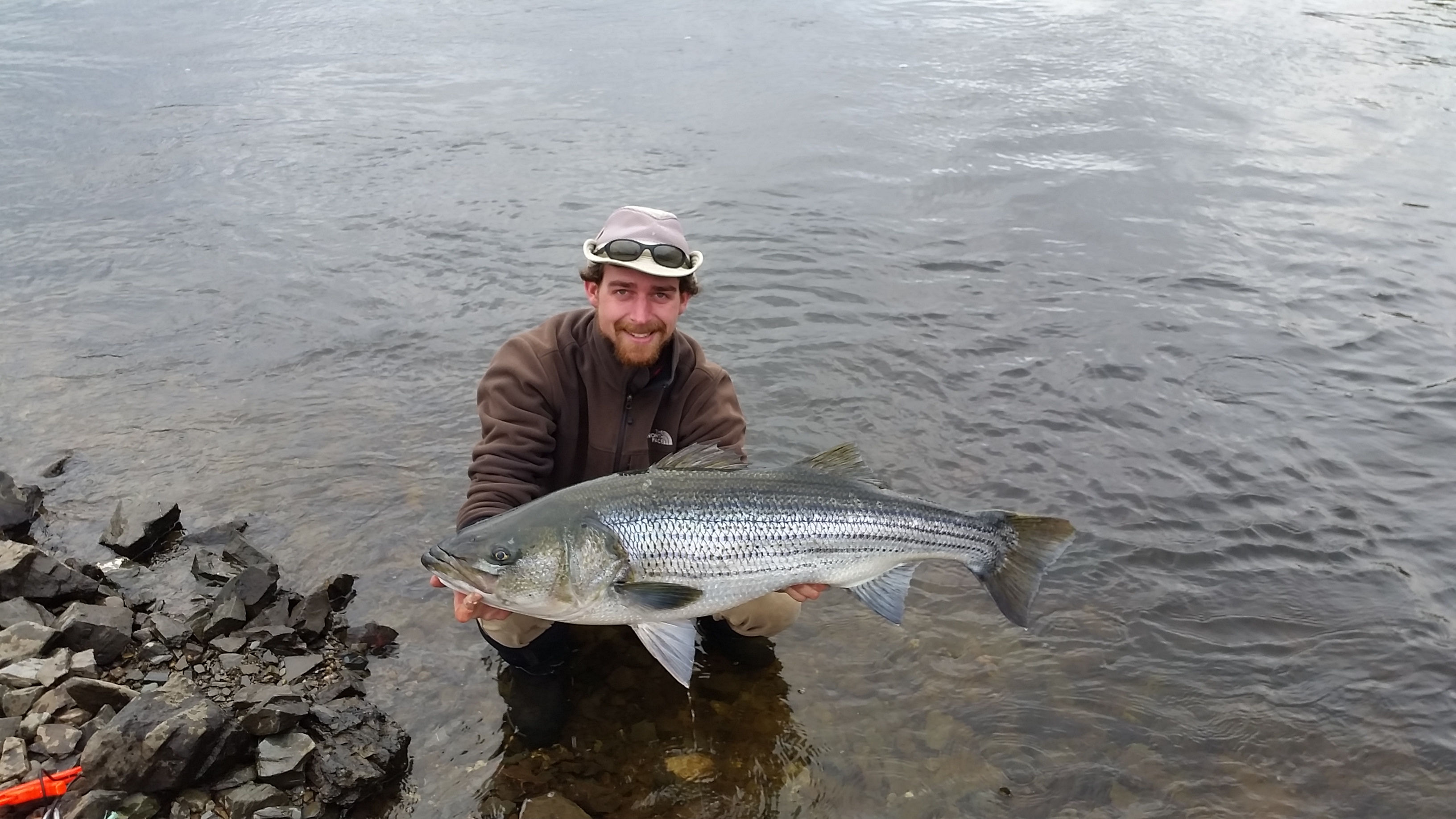L’Université de Nouveau-Brunswick – Dr. Allen Curry
avril 3, 2018Le plus récent projet de recherche financé de l’Université du Nouveau-Brunswick n’exige peut-être pas des travaux en nature et des déplacements dans les eaux froides des rivières et des ruisseaux. Il est quand même d’une très grande importance pour l’avenir du saumon atlantique.
L’université a reçu une somme de 6 900 $. Elle prépare une analyse de la littérature scientifique qui décrit le comportement alimentaire et les proies préférées du bar rayé pendant la période de frai, et qui met l’accent sur les salmonidés.
Samuel Andrews, un des étudiants au doctorat du professeur Allen Curry, rédige l’analyse de la littérature. Il explique que dans le cadre de cette analyse, on résume tout le régime alimentaire du bar rayé et les études sur la prédation du saumoneau survenant dans l’aire de répartition naturelle du saumon atlantique.
« Cette analyse comporte plusieurs étapes : évaluation de l’écologie alimentaire du bar rayé dans les rivières où le saumon atlantique est présent; caractérisation de son comportement alimentaire avant le frai, pendant le frai et après le frai; description des conclusions; discussion des méthodes pour toutes les études ayant signalé la prédation par le bar rayé du saumoneau et du tacon atlantique; et présentation d’une méthode d’évaluation exacte de la prédation du saumoneau par le bar rayé. »
M. Andrews ajoute que cette démarche vise trois buts.
« Nous voulons quantifier la menace relative de la prédation du saumon atlantique par le bar rayé, résumer les approches à la recherche et les études effectuées pour décrire les interactions de prédation avec le saumoneau de l’Atlantique, et proposer des designs et méthodes d’étude pour mieux évaluer les interactions entre le saumon atlantique, le bar rayé et les pêches qu’ils soutiennent. »
Il souligne que la recherche est importante à une période où le saumon atlantique fait face à de nombreuses menaces de survie tout au long de son cycle biologique complexe et charismatique, par exemple la hausse des températures de l’eau, la pêche commerciale et la fragmentation de l’habitat comme celle imposée par les barrages.
« Les populations de bar rayé en voie de rétablissement sont maintenant soupçonnées d’être une menace pour le saumoneau de l’Atlantique au printemps, lorsque les deux espèces se chevauchent brièvement dans les estuaires fluviaux. La relation prédateur/proie du bar rayé et du saumon atlantique demeure cependant mal comprise et largement sous-étudiée. »
M. Andrews indique que toutes les études effectuées à ce jour présentent de nombreuses suppositions et incohérences qui se traduisent par des estimations inexactes de la prédation du saumoneau.
« On a proposé de retirer le bar rayé en indiquant que c’est une solution plus facile pour enrayer la mortalité des saumoneaux dans les estuaires. Toutefois, il n’est pas tout à fait certain que le bar rayé pose une menace importante pour le saumoneau, que l’enlèvement du bar rayé favoriserait les retours de saumons adultes; on ne sait pas non plus quelles seraient les conséquences du retrait du bar rayé pour tout l’écosystème. Avant d’effectuer un changement d’une telle envergure de l’écosystème, les chercheurs doivent décrire de façon exacte l’interaction entre bar rayé et saumoneau et mesurer attentivement la survie des saumoneaux. Ce sont là deux mesures essentielles qui n’ont pas encore été adoptées. Tant que ces lacunes en matière de connaissances n’auront pas été comblées, il est impossible de savoir si la solution facile est en fait la bonne solution, ou même une solution viable. »
Le projet est presque terminé. Avant de le soumettre, il reste à faire l’analyse finale et à apporter des corrections mineures, des mises à jour et des clarifications.
Le but ultime?
« Mieux guider notre compréhension des études de prédation du saumoneau et le design de toutes les futures études sur la prédation du saumoneau. Grâce à ces clarifications, cette analyse permettra de faire des estimations exactes de la perte de saumoneaux et d’assurer une gestion efficace pour atténuer les pertes de saumoneaux si l’effet de la prédation par le bar rayé s’avère significatif. »

